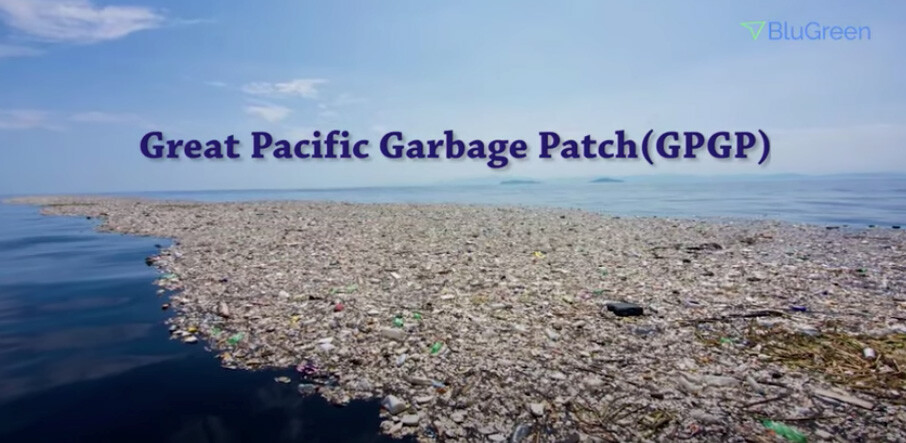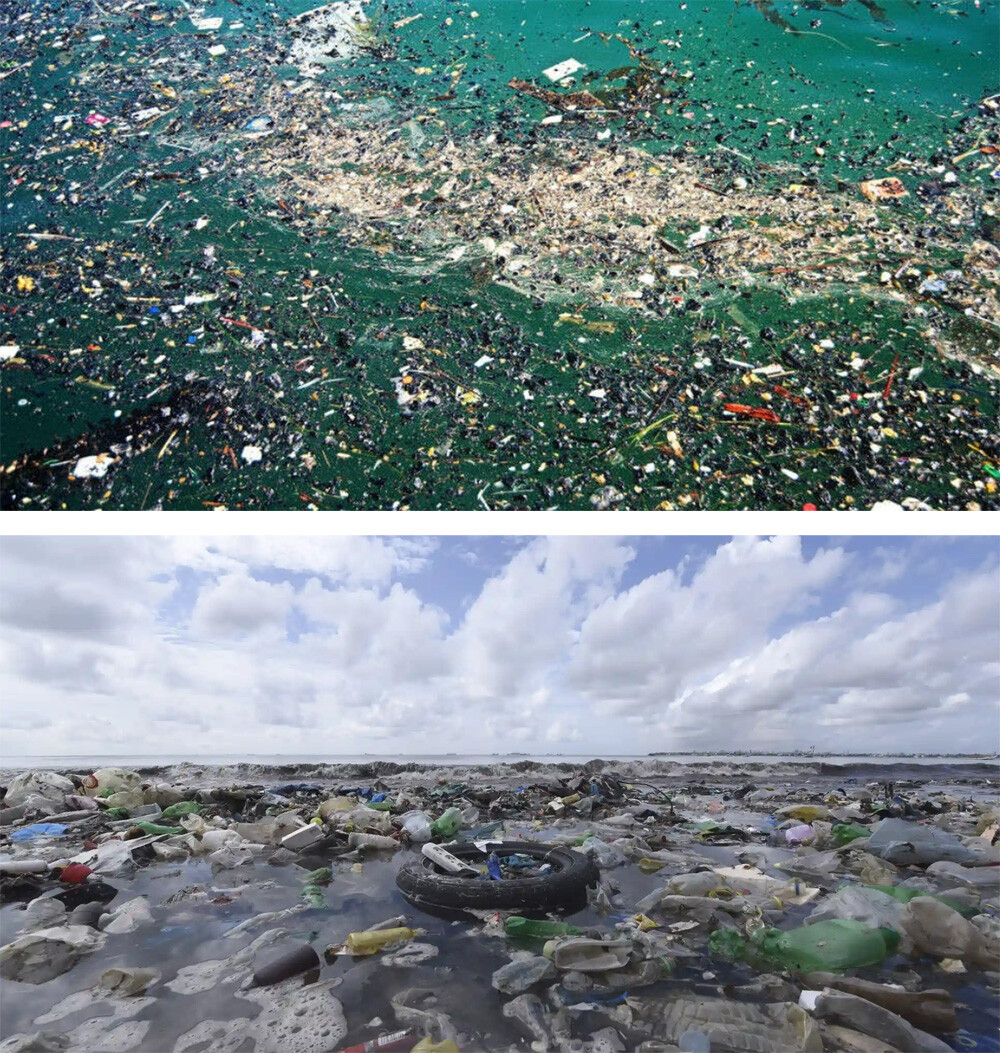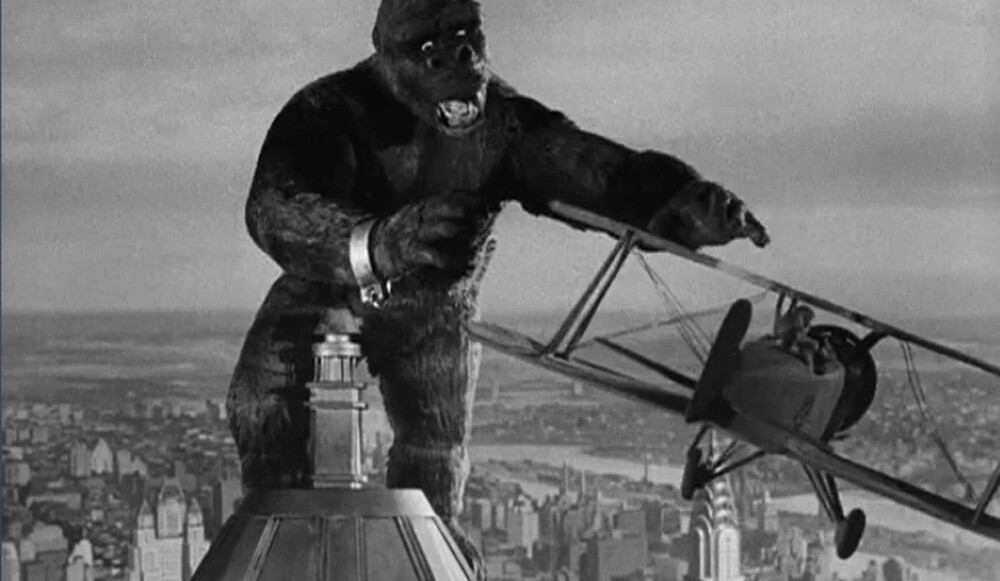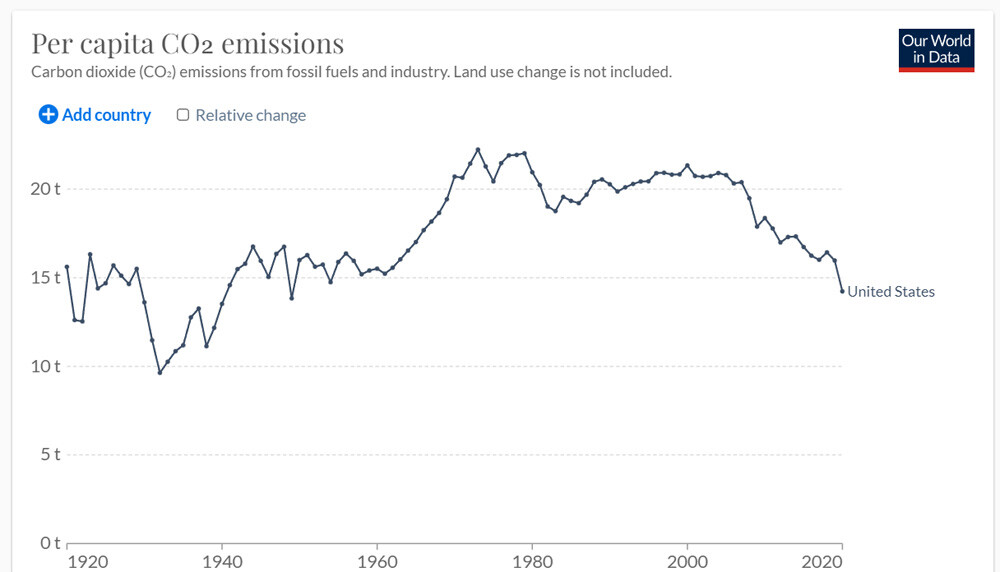6 Stories You’ve Heard About The Environment (Are Actually B.S.)

When it comes to the environment, a topic especially in the news right now thanks to a huge bill that just got signed into law, we’re all on the same basic page, right? Well, that’s why—
Haha, just kidding. Of course not everyone’s on the same page, leading to a large amount of fighting and possibly actual wars. However, if you’re someone who prides yourself on knowing the facts of the situation (unlike those other people), don’t get complacent. Some of the most popular and widely spread facts about the environment and climate change are lies, lies that escape your scrutiny because they pass the basic check of “this seems to be pro-Earth.”
False: Every Photo You’ve Seen Of The Great Pacific Garbage Patch
The Story:
A thousand miles or so west of California lies Garbage Island, a massive collection of trash dumped by people such as yourself. It’s twice the size of Texas. We’re making some headway into cleaning it now, but it’s a Herculean task. So please, don’t reach for that plastic straw. Suck on this crumbly cardboard, else you'll just make the island stronger.

The Truth:
The Great Pacific Garbage Patch is an area of increased litter concentration, averaging less than a gram of litter every 20 square meters. It's not a landmass and doesn't look like one. A couple of London advertising execs dubbed it “Trash Isles” and ran an unserious campaign to get the UN to recognize as a country, but it is not an actual patch you can climb on or bang your boat against, and you’ll have some trouble even spotting any sign of it on satellite photos. It has an alternative more accurate name, “Pacific trash vortex,” which is generally not used because it sounds too cool.
When you see pictures allegedly of the patch, they invariably show some unrepresentative stretch of packed-together garbage close to shore. The photo we included above comes from the World Wildlife Foundation’s page for the patch, but that photo isn't of the patch—it's a beach in Greece. This next photo that we found online really shows some trash in the Caribbean:

The University of Colorado illustrates the patch with these next two photos. The first is widely falsely attributed to The Ocean Cleanup (a legit group, who are cleaning the patch), but it’s the Caribbean again, an AFP photo. The second photo is from the Philippines.

Google will also send you to these two photos published in a Times of India article about the patch. The article does not mention that the photos were taken just off the coast of Senegal and in the Port of Los Angeles respectively.

via Times of India
The best current source on the patch is The Ocean Cleanup. Most of their photos show the collected trash they dump on their ship’s deck, not the garbage in the ocean, because when they do show the floating garbage up close, it looks like this:

The following video on the cleanup effort shows only very short clips of the actual cleanup effort because the water those ships are filtering looks pristine from above, even pre-cleanup, until the ships drag a bunch of litter into a small contained region.
Here’s the crazy part though. Those people concerned about the Great Pacific Garbage Patch? They’re still right. Trash in the ocean matters, even when you can’t see it (especially when you can’t see it). The problem was never that the garbage was unsightly, it’s that garbage hurts wildlife, and the litter’s dispersed nature makes collecting it even harder. But the patch is not a Futurama-style ball of compressed muck, even if that’s what it takes to get people to pay attention.
So, we don’t want you to take away that Pacific Garbage Patch is no big deal. Let’s give you something else to take away: whom to blame.
See how that photo above from The Ocean Cleanup shows a fishing net? According to samples, fishing nets make up almost half of the entire patch, by weight. Yes, just plastic fishing nets, nothing else. Out of what remains, the majority of that is also waste dropped in the water by the fishing industry. That means, in total, the overwhelming majority of the patch comes from the fishing industry discarding its trash at sea, that’s all.
That still leaves a ton of other trash (or rather, ten thousand tons of trash), largely dumped by six Asian countries. But c’mon. Step one has got to be policing those fishing boats. We don't know the best way to do this, but we're thinking handing letters of marque to privateers so they can chase down these fishermen with swords.
False: “100 Companies Are Responsible For Almost All Of Global Warming”
The Story:
When the news came out that 71 percent of greenhouse gas emissions can be linked to just 100 corporations, many people smugly smiled because it fits with how we already think corporations really suck. It means we can just pass new laws against those corporations (EA, Comcast, etc.) and make them pay their taxes, and that’ll solve most of the problem. It also lets individuals off the hook for their own activity. If 100 companies create 71 percent of pollution, surely 1,000 companies produce at least 99.8 percent, leaving our own contributions insignificant.
People online screencap the following exchange and share it anew almost weekly:

Here’s a similar megapopular post, which may or may not be readable here, depending on how Twitter chooses to crop its images this week:
The Truth:
Go read the report everyone’s talking about, and see what these 100 corporations are. The top one, by a wide margin is “China (coal).” It is the entire coal industry of the nation of China. The second one is the entire oil industry of Saudi Arabia. The third is Russia’s oil and gas industry, and the fourth is Iran’s oil industry. Then comes ExxonMobil, followed by Indian coal, Mexican petroleum, and Russian coal.

This is not a list of who burns fossil fuels, and it is not a list of companies (most are national industries). This is a list of who extracts fossil fuels. Which, technically, is indeed who’s “responsible” for emissions, in that our furnaces can't emit without someone giving us the fuel, but it doesn’t tell us anything about who’s polluting. Emissions come when fossil fuels burn. When the EPA categorizes sources of emissions, they break down who’s responsible for burning the stuff, not who makes it. The EPA also breaks it down by sector, not by company, because waaaay more than 100 entities are at play.

It’s not even a matter of “well, both sides are at fault, the consumers and the producers.” Right now, reducing fossil fuel consumption is good, but reducing fossil fuel production solves nothing, not until we’ve built our alternatives. Are you angry at these countries for pumping out so much oil and gas? Well, then you must have been thrilled when Russia's exports got cut. Prices soared, oil companies made more money, and the resultant transition to renewable energy has not been instant and easy.
If that EPA chart looks to you like ordinary people still contribute nothing to emissions—it sneakily lumps residential and commercial together—think again. People in their homes contribute a lot. They’re not collectively the biggest chunk, but they are a big chunk because there are a whole lot of homes out there, and they use a whole lot of electricity (binge this 800-page paper, if you want more details). When Spain recently passed a law limiting how low commercial A/Cs can go, they also recommended people keep to the same limits in their own homes, because residential consumption has to drop too.

Even if the stat were about 100 companies selling TVs and pants and stuff, we could hit you with “they couldn't sell if people weren't buying,” but it solely covers fossil fuel extraction. We already knew most emissions come from fossil fuels. How does the “100 corporations” number change things? If the same amount of oil came thanks to 10,000 drillers instead of 100, would that be better for the environment? The report is a bombshell if you're on a crusade against state-owned monopolies, but that doesn't seem to be most people's takeaway.
Listen, just like those confused tweets said, there’s totally been a push in the past to divert responsibility for this sort of thing to individuals, but that doesn’t mean flipping that diversion always tells the truth. And we’ve talked about that push before. We’ve talked about how BP marketing invented the concept of the individual carbon footprint, plastic makers invented the lie that you should recycle plastic, and drink companies convinced you litter is your fault, all as distractions. Oh, and also check out this article where we reveal that sea garbage really comes from from fishing trawlers, that's a good one.
False: “We’re Going To Solve Climate Change By Planting One Trillion Trees!”
The Story:
The idea that one trillion trees could combat climate change made people very happy, as this solution requires no unproven technological advances and no lifestyle changes. It just requires tremendous amounts of labor, by people who presumably aren’t us.

We’re not going to attack this idea for being too hard. We’ll point out that when, say, Ethiopia said it planted 350 million trees in a single day, that was even harder than it sounds and no one could verify the claim, but never mind that. Let’s say you have enough people to chip in and do this, and enough pizza and beer to keep them happy. Before getting to work, you should still learn exactly where this “one trillion” figure came from.
The Truth:
No one calculated one trillion trees as the optimal amount of hyperventilating leaves to combat climate change. Instead, some scientists estimated the total number of trees that could fit on Earth, if new trees covered literally every single piece of viable land. They came up with one trillion, on top of the three trillion trees that currently exist.
The scientists followed their study up with a formal correction, retracting the eye-catching claim that this was the “most effective solution to climate change to date” and admitting it wouldn't do as much good as they'd claimed. Years later, one of the authors said that even if we could do it, that many plantations of trees wasn't even a good idea. “I’ve never in my life said we should plant a trillion trees,” he said.

We should plant trees (we’ll likely never come anywhere close to a trillion or that stage where we’ve planted too many), for all sorts of reasons. But keep in mind that trees aren't dedicated carbon-sucking powerhouses. As we’ve mentioned before, though trees take in some carbon dioxide to make food and parts, most of that gets oxidized back into CO₂, either by the tree or by other organisms, while just a small bit of that carbon gets fixed into wood.
The most efficient tree species we’ve found at this can capture 100 tons of carbon per acre per year (and that’s a headline-grabbing number, much more than typical trees). Meanwhile, in 2020, carbon capture machines we set up at just 28 power plants captured 40 million tons of net carbon, and we’re still developing machines to work much better than the current ones. Machines will capture so much that where do we put all this captured carbon? becomes a serious question—which is good, because that's how much carbon we want to remove from the atmosphere.
“We need to scale this up a hundredfold!” said people in the biz, about the machines. Which you can take to mean, “This isn’t nearly enough!” ... or: “Scale this up a hundredfold. That’s the plan. I’ll bring the pizza, you bring the beer.”
False: “Wow, Even This Gorilla Has Asked Us To Fight Against Climate Change”
The Story:
You’ve all heard about those gorillas that speak sign language, right? The most beloved of these was surely Koko, a western lowland gorilla famous for both communicating using sign language and adopting a kitten.
Ahead of the 2015 Paris Climate Summit (where the Paris Agreement happened), we were treated to a video of Koko explaining she wants us to act. “I am gorilla,” she signed. “I am flowers, animals. I am nature. Man Koko love. Earth Koko love. But Man stupid. Stupid! Koko sorry. Koko cry. Time hurry! Fix Earth! Help Earth! Hurry! Protect Earth. Nature see you. Thank you.” This resonated with many because Koko is a noble guardian, surely wiser and more in touch with the land than any of us.
The Truth:
While gorillas are very smart compared to, say, worms, or even cows, they have limits. Gorillas do not understand climate change (the subject of the conference) or biodiversity (the subject of the ad). They do not know Man's effects on the global environment, or even know of the existence of a global environment. They are not Na’vi. They are gorillas.
This video was put together from a bunch of different takes to try to assemble a message that looked like it meant something. Koko was trained beforehand. Koko would probably be distressed if a bulldozer (or a herd of elephants) ripped up the trees near her because she wanted to be left alone and to eat and sleep, but she had no opinion on air pollution because she didn’t know what that is.

RKO Pictures
But hey, who could get at mad at a conservation group for urging action, even if they had to exaggerate the gorilla caucus’s interest? The surprising answer: linguists. The video made a mockery of what sign language really is, linguists said. Whose idea was it to transcribe Koko’s signs in adorably broken pidgin English? In sign language, if you use the corresponding signs, that would mean “people are stupid” and “I cry” and “I love people, and I love the Earth,” so that’s how you should translate it—not “Man stupid, Koko cry, Man Koko love, Earth Koko love.”
Koko did not express the thought “I love people, and I love the Earth,” however. In fact, many scientists who regularly observe these gorillas say the animals don’t really use sign language at all.
When a gorilla learns to associate a sign for “banana” with bananas and so repeats that motion when they want a banana, you might think the gorilla speaks sign language. However, this also might just be an example of operant conditioning. You can train a dog to hit a button that plays an audio clip of the word “outside” every time it wants to go outside; that does not mean the dog has learned language.

The key, say language scientists, is how the speaker links words together to form ideas. Koko knew how to move her hands when she saw water (for example) and how to move her hands when she saw a bird, but when people transcribed what she said using these signs for extended periods, without inserting their own interpretations, the result was gibberish.
Koko did not know grammar, note speech experts. If you don’t use grammar when you think, you are not really comparable to humans, say these critics, which gives a whole new meaning to the term grammar Nazi.
And speaking of scientific debate ...
False: “97 Percent Of Scientists Believe In Manmade Climate Change”
The Story:
Listen, we had something really fun planned for this section. We were going to trace the origins of this famous stat at length, and then after ripping apart the methodology using the power of supernerdiness, we were going to end by saying, “Actually, for all practical purposes, the real number is ... basically 100 percent.”
That would be unwise, because most people would stop reading halfway through and leave convinced we’re climate change deniers. So, instead, let’s say upfront: The scientific community is long past debating whether climate change is real.
But still, that 97 percent stat was always bogus. It’s repeated everywhere, by politicians and talk show hosts and movie characters, to the point that most of us don’t even question how weird it is. This is surely the only question where we defer to “X percent of experts agree,” right—outside of advertising, where that claim is always used to mislead us? How does this stat define “scientist”? Are we supposed to believe they interviewed every scientist in the country, or in the world?

The Truth:
The stat first came from the American Geological Institute. They reached out to 10,000 geoscience experts in 2008, 3,146 responded, and 82% answered that they believe people cause climate change. 97% of climate scientists said they believed the same thing—but that group numbered just 79, which leaves too high a margin of error to say anything about the world in general.
That wasn’t the last attempt to measure consensus. A 2013 study analyzed the abstracts of 11,944 papers on climate science. This study found a 97 percent belief rate (though, it was 97 percent of papers, not 97 percent of scientists), which was coincidentally the same number as the estimate from that tiny earlier sample. It was such a coincidence that plenty of people objected to the reasoning and came up with different numbers from the same data.

People’s biggest objection: The study excluded the majority of papers, since the majority didn’t explicitly endorse or reject anthropogenic global warming. That means the actual number of scientists who believe is much lower than 97%, said climate change skeptics. Or, countered scientists more validly, the excluded papers took no position because they considered the matter beyond question and irrelevant to the more specific topic they were studying. When you take that into account, the number goes far above 99%.
According to the study authors, it doesn’t matter if it’s 97% or 99.9% or even 90% (and it was never possible to really determine the exact value anyway). They just needed to tell the public most scientists believe. Most Americans think scientists are evenly divided on the issue, and telling them the consensus strongly goes one way (even the 82% figure is fine) changes the listener’s mind on climate change. Unless they’re an active climate change denier, in which case the stat's totally useless, like saying 97% of soothsayers believe in astrology.
False: “Emissions Keep Going Up, And We’ve Been Doing Nothing About It!”
The Story:
You know greenhouse gas emissions keep rising, right? Globally, it’s been almost a steady linear increase since 1950. It’s up and up and up, with no end in sight!

“That punchline makes no sense.”
“Neither does our INACTION ON CLIMATE CHANGE, Bob!”
The Truth:
For well over a decade, emissions have been dropping in dozens of the richest countries, including the United States.
If we’re talking about how big a problem remains, that success doesn’t matter, because overall, CO₂’s soared—any country’s rise affects everyone. But if we’re gauging how much a country can improve, we do need to look at individual countries with stable economies who haven’t been transitioning hundreds of millions of people out of poverty. And when you look at that, yeah, it turns out developed countries are able to cut emissions. Here’s an infographic tracking some changes till 2014:

And what happened after 2014, you ask? Emissions fell more. One metric measures emissions per capita, to separate progress in this matter from population growth. In 2020, the US shockingly emitted less per capita than it did exactly 100 years earlier—10 percent less in fact. This was thanks partly to a COVID dip, but in 2021, numbers didn’t rise even back to 2019 levels.

Few people have a good reason for publicizing this progress. If you’re devoted to warning people of impending catastrophe, telling everyone we’re already turning things around doesn’t help with that. And if you instead want to deny climate change is even a thing, you definitely don’t want to acknowledge that steps to combat climate change work. So this info, and this whole article, probably offered something to anger just about anyone—but then, you could say the same thing about our articles on superheroes.
Follow Ryan Menezes on Twitter for more stuff no one should see.
Top image: Charles Sharp, veeterzy/Unsplash
